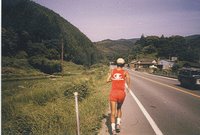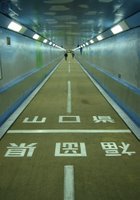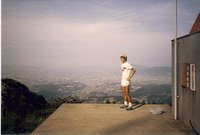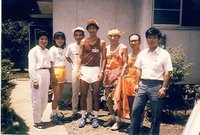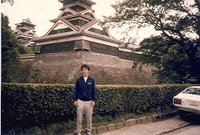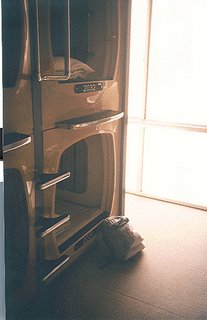
June 29, 1983, Wednesday
Today was a bright, sunny day. In other words, it was HOT!!! I left Nima at 8:30am, starting from City Hall with three runners from nearby Ohta City. These runners followed me for 13km. I had asked them how long they were going to run with me and I was looking forward to going at it alone after they completed their planned distance.
As we approached the 13km mark at the corner of road, I was beginning to smile and feel at ease, knowing that I could just relax and run on my own for the rest of the way. I started to joke around with the runners who, by this time, had picked up the pace knowing that they would soon finish. I thanked the three runners and shook their hands as they slowed. When I turned the corner, I couldn't believe my eyes. In fact, if I were wearing shades, my eyeballs would have knocked the glasses 25 feet in front of me. What I saw was a fresh group of runners, stretching and doing sprints with their Kamikaze headbands. These guys were GUNG HO! They waved at me and informed me that they will run the next 12km with me. I didn't have the heart to turn them down, especially after seeing these guys getting so psyched to run the 12km.
Again, I worked hard to keep my cool and maintain my composure as an Ambassador from Guam. I really wanted to be left alone, though. I guess it is not obvious to people about how fatigued one can get when putting in this kind of distance and that a certain form of concentration is required.
I remember reading a study about how recreational runners dissociate while running. They like listening to music or do other things to take their mind away from the task at hand. Elite runners, on the other hand, associate with the activity of running and are constantly gauging their breathing, effort level, etc., i.e. they listen to their body. I definitely don't consider myself an elite runner, but this run requires that I monitor myself very carefully while running, and running solo is the best way for me to do that.
At 3:00pm I eventually reached Izumo City Hall and met with the mayor. (See Photo) I later toured the outskirts of the city as well as the famous Izumo Shrine. I'm staying at Mr. Mochida's house tonight where we had a huge party earlier this evening. Guests kept arriving well into the night to say hello. Today I am especially tired; maybe a result of running in today's heat. I feel like hiding in a dark corner so that I can just rest...just a little bit longer.


